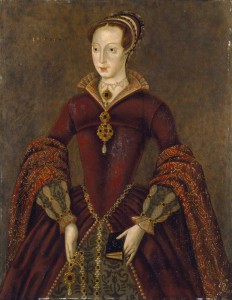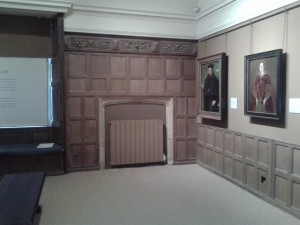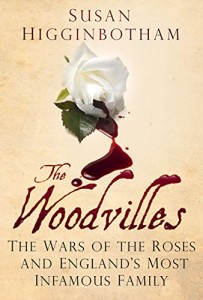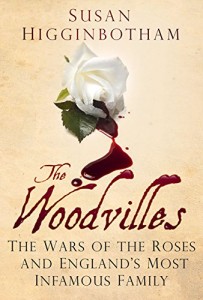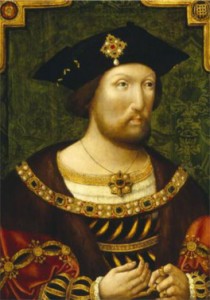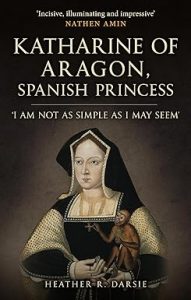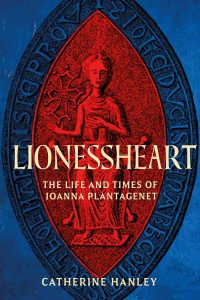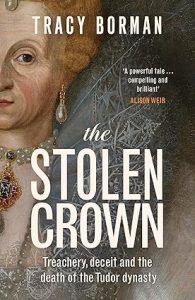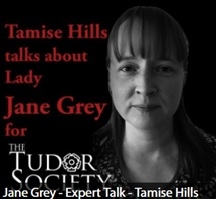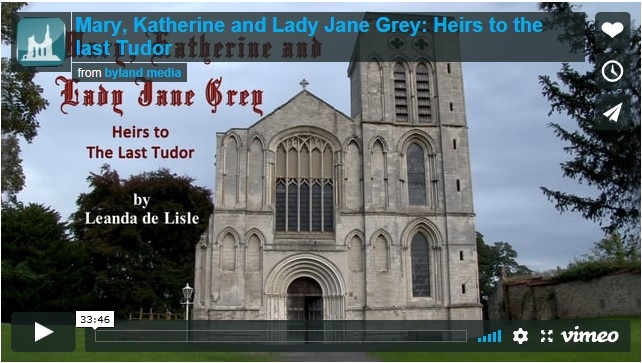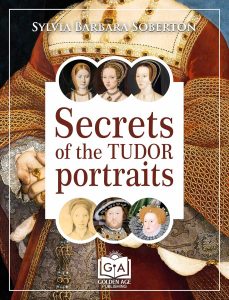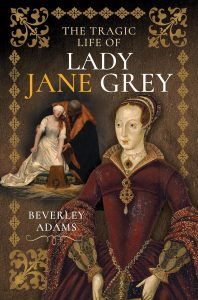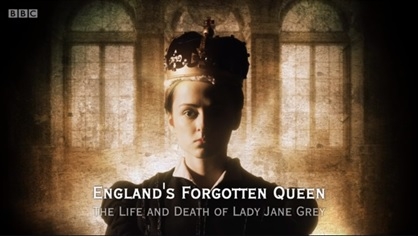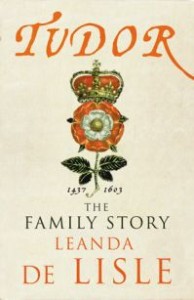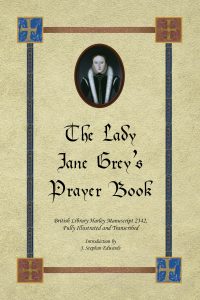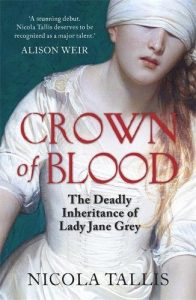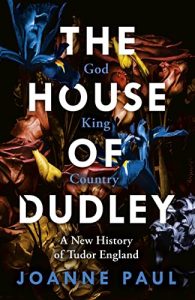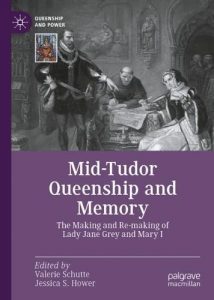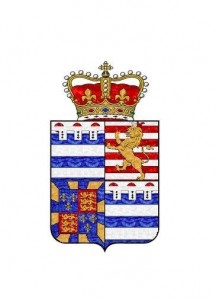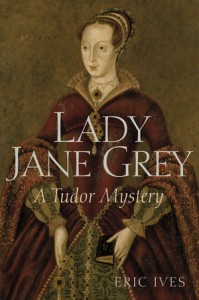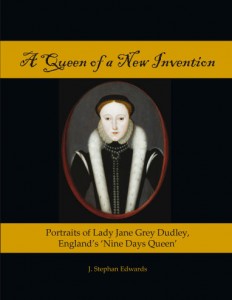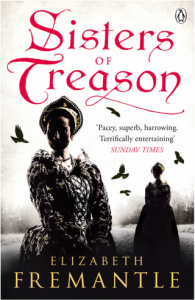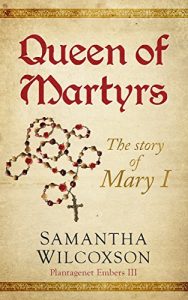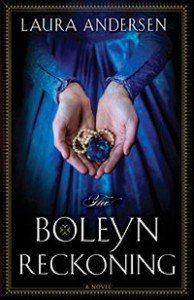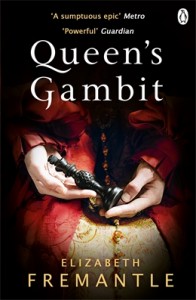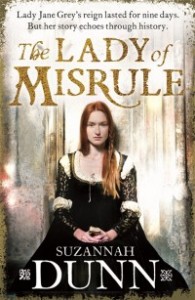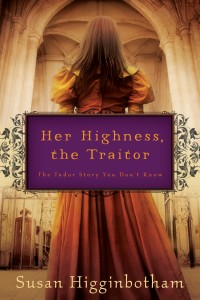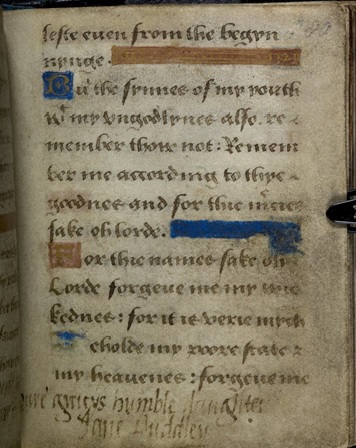Stephan Edwards is the author of ‘A Queen of a New Invention: Portraits of Lady Jane Grey Dudley, England’s ‘Nine Days Queen.’
You can order it from:
Some Grey Matter
Amazon.com
Amazon.co.uk
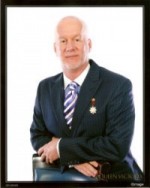 (c) Stephan Edwards
(c) Stephan Edwards
Stephan’s website is Some Grey Matter.
Many thanks to Stephan for answering my questions.
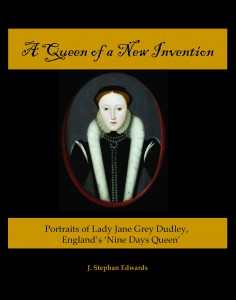 (c) Stephan Edwards
(c) Stephan Edwards
Why did you decide to concentrate on Jane portraiture?
The project emerged out of my PhD thesis, which was itself a biographical study of Jane Grey. It became apparent while writing the thesis that a significant number of portraits bore Jane’s name, yet the sitters in the majority of them all appeared quite different from each other. They could not all be genuine depictions of Jane. “New” portraits were still emerging periodically, as well. Since no comprehensive study had ever been undertaken to determine which, if any, of the more than two dozens portraits might be authentic, I decided to take on the project myself.
Do you have a favourite portrait?
There are a couple of portraits in the group that have greater appeal to me on purely aesthetic and artistic grounds. But I do not have a favorite, as such.
Which portrait surprised you the most, results wise?
I think perhaps the Soule Portrait surprised me the most, in that I was actually able to track it down. It had virtually disappeared from the historical record after Sir Roy Strong wrote about it 50 years ago. I actively searched for it for over 5 years and had begun to assume it was lost forever. Then a chance discovery through Ancestry.com, of all places, led me to my first real clue and eventually to the painting’s current owner. I was quite surprised that it still existed and could be located.
Were the results of any portraits disappointing and if so, why?
Disappointment can occur only if one has an advance expectation of a particular outcome. As a researcher, I do try to remain objective and to let the evidence lead where it may, without hope or expectation. But I confess I was a little disappointed that the Syon Portrait dates to such a late period. It would have been far more interesting if it had dated to the 1580s or 1590s.
In 1996, the ‘Master John’ portrait at the National Portrait Gallery in London was re-identified as Katherine Parr. Your research includes this and several other portraits which have been thought to be Lady Jane or Katherine Parr. Why have so many portraits been linked to the two women?
I think the better question may be “Why have so many portraits of Katherine Parr been misidentified as portraits of Jane Grey?” And the answer lies, in my opinion, in the relative presence of each in popular culture throughout the century after their deaths. Parr was well known as Henry VIII’s last queen, but was not particularly ‘famous’ for any other reason. As a result, she was never the subject of pamphlets, plays, poems, and ballads, leaving less reason for her to be remembered visually. Jane, on the other hand, was celebrated and remembered consistently for political, religious, and socio-cultural reasons. There was thus a greater impetus to ‘see’ her. In the absence of an authentic portrait, it was all too easy to co-opt portraits of her co-religionist and former guardian Katherine Parr.
You suggest Katherine Grey (Jane’s sister) has the potential subject of a couple of portraits, which have been previously labelled as Elizabeth I or Jane grey. Is this the first time that Katherine Grey has been put forward as a possible sitter for these?
The short answer is, “Yes, this is the first time.” My research indicates that virtually no historian having examined the portraits of the Berry-Hill Type over the course of the past 125 years has ever expanded their list of candidates beyond just Elizabeth Tudor and Jane Grey. But as I discuss in the book, none of those historians ever gave the portraits serious, objective study. Instead, the first is well documented to have reacted very subjectively and reflexively, without any careful study whatsoever, and his ‘off-the-cuff’ opinion has been uncritically accepted and repeated by others ever since. To my knowledge, the possibility that the portraits of the Berry-Hill Type might depict someone other than Elizabeth Tudor or Jane Grey has simply never before been considered.
Do you think that any of the portraits are actually of Jane?
I do not believe that any of the 29 principal portraits should be relied upon as an accurate depiction of the true physical appearance of Jane Grey. For reasons discussed at length in the book, I do believe that the Syon Portrait is perhaps the closest we shall ever come, but it too has its limitations.
Are there any other ‘Jane’ portraits that you would like to analyse?
I worked hard to make my study a comprehensive one covering virtually all of the portraits said to depict Jane Grey and which can still be located today. One of the appendices to the book even discusses a number of portraits documented in the historical record but which are now lost. Certainly I would be keenly interested to locate and analyze any one of the ‘lost’ portraits (among them, the Berry-Hill Portrait has the greatest likelihood of actually turning up some day). But I am not aware at present of any other portraits originating before 1650 that are said to depict Jane Grey. I think (hope!) I covered them all.

